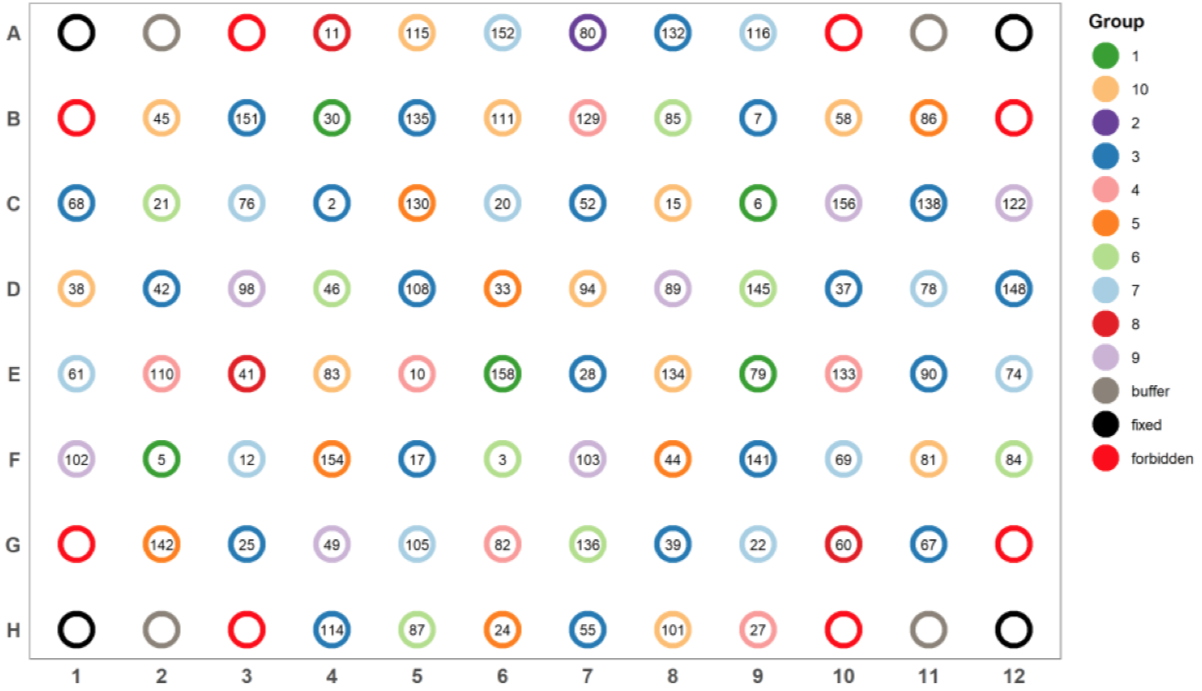With the ever-increasing throughput of instrumental pipelines used in biomedical research, it has become possible to analyze hundreds of samples, covering various biological conditions and confounding factors. Although these large-scale approaches promise unprecedented statistical power, they pose new challenges in terms of experimental design. In particular, it becomes necessary to avoid batch effects and limit technical biases through various randomization designs.
Many factors can influence results in clinical research, particularly biases in sample distribution before biochemical preparation. To simplify the tedious task of distributing assays across multiple well plates (Picture) while addressing the aforementioned constraints, researchers at Irig have developed an easy-to-use application, Well Plate Maker (WPM).
96-well plate.
Several tools already exist to work on plate maps (
e.g. sample coordinates in a 96-well plate). However, WPM differs in two ways. First, the researchers designed WPM to include a graphical interface, making it user-friendly, even without programming skills. Second, WPM can be used upstream of the experiment to optimize the design of the plate maps for which it is indeed necessary to optimize the distribution of samples on the preparation plates, to limit bias (
Figure). To do so, the user can specify a certain number of constraints, such as group membership, spatial or neighborhood constraints, size and number of plates. Moreover, in the case of multiple plates, samples are distributed evenly among the different plates according to the total number of samples and the size of the groups, thus avoiding "plate effects". Overall, WPM simplifies block randomization to limit other types of batch effects.
Thanks to its large range of options, WPM can be adapted to a wide range of applications (omics analysis, screening...), making it possible to easily design well plate maps, which can then be printed for wet-lab implementation. For example, Well Plate Maker is used at IRIG to optimally distribute plasma samples from clinical cohorts, prior to their biochemical preparation and proteomic analysis by mass spectrometry.

Representation of a map of well plates generated by WPM.
In statistics, a
confounding factor, or confounding variable, is a random variable that influences both the dependent and explanatory variables.
Well plates: These are plates allowing to analyze simultaneously up to 96 different samples, contained in wells.
Well Plate Maker is implemented in R and available on
Bioconductor under the Artistic 2.0 open source license. In addition to the classical scripting, it can be used
via a graphical interface, developed with Shiny technology.
This work was supported by grants from the French National Research Agency: ProFI project, GRAL project, LIFE project and MIAI @ Grenoble Alpes.